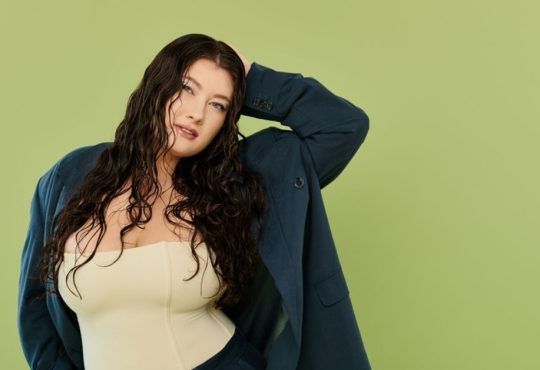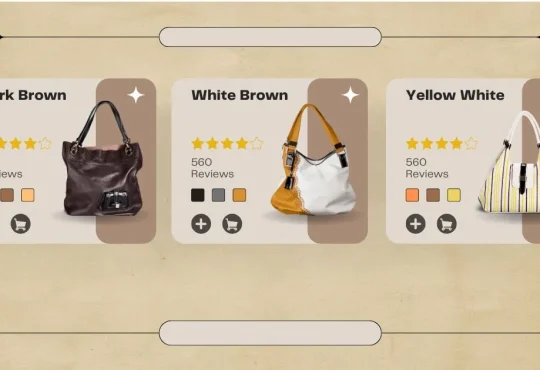
The fashion industry is evolving rapidly, and technology is at the forefront of this transformation. One of the most exciting innovations in recent years is the integration of Augmented Reality (AR) into fashion shopping experiences. By 2025, AR is set to revolutionize the way we shop for clothes, footwear, accessories, and more. Let’s dive into how AR will reshape fashion shopping in the near future.
How Augmented Reality is Revolutionizing the Industry
1. Virtual Try-Ons
In 2025, traditional fitting rooms are likely to become a thing of the past as augmented reality brings virtual try-ons to the forefront. Shoppers will no longer need to physically try on clothes to see if they fit or look good. Instead, AR technology will allow customers to try on clothing virtually, simply by using their smartphone, tablet, or AR glasses.
Retailers will use AR to create digital mannequins or “avatars” based on customers’ body measurements. These avatars can be customized to reflect different body shapes and sizes, giving customers a realistic idea of how a particular item will fit them whether shopping at home or in-store; virtual try-ons will offer a more convenient and hygienic way to try on clothes without the need for changing rooms or physical garments.
2. In-Store AR Experiences
In 2025, many brick-and-mortar stores will adopt AR technology to enhance the in-store shopping experience. Imagine walking into a store, pointing your phone at an outfit or a display, and instantly receiving information about the clothing’s material, origin, and sustainability. AR will overlay this information onto the real-world environment, creating an interactive and informative shopping experience.
Additionally, AR can offer styling suggestions. By scanning an item, shoppers could see how it pairs with different accessories, shoes, or outerwear, helping them to make more confident purchase decisions. This technology will blend the digital and physical worlds, offering the best of both.
3. Personalized Shopping Through AR
Personalization will be another key feature of AR in 2025 fashion shopping. AR will analyze customers’ preferences, past purchases, and body types to recommend clothing items that fit their style, size, and needs. For example, AR could show shoppers a collection of outfits based on their fashion history, matching them with colors, cuts, and styles that align with their tastes.
Furthermore, virtual shopping assistants powered by AR will guide users through the shopping process. These assistants can recommend products, show the best deals, and offer exclusive discounts, all while ensuring that the shopping experience is tailored to each individual.
4. AR-Driven Fashion Shows and Fashion Weeks
In 2025, AR will enhance the shopping experience and the way we interact with fashion shows and industry events. Virtual reality and AR technology will enable customers to attend live-streamed fashion shows and even participate in the shows themselves by interacting with virtual fashion pieces. Shoppers will have the chance to view the latest collections in 3D, try on digital versions of the outfits, and purchase items directly from the show.
AR will also allow for digital runway presentations, where users can “attend” fashion shows through AR glasses or apps and explore runway collections in detail. From watching models walk the runway in 3D to instantly trying on the outfits, this immersive experience will change how people engage with high-fashion content.
5. Changing the Way We Accessory Shop
Accessories are a significant part of any outfit, and AR will make shopping for jewelry, bags, and shoes easier than ever. Through AR technology, customers can virtually try on accessories to see how they look with different outfits, ensuring they pick the right style before committing to a purchase.
For example, AR applications allow users to see how a pair of sunglasses will look on their face or how a handbag complements their outfit. With this technology, accessory shopping will feel as interactive and engaging as clothing shopping, enhancing the overall consumer experience.
6. Sustainability and AR
One of the most critical aspects of AR in 2025 fashion shopping is its potential to drive sustainability. By reducing the need for physical samples, fittings, and even overstocking, AR can help reduce fashion waste. Virtual try-ons will allow customers to try on clothes digitally, reducing the need for returns and minimizing the carbon footprint of shipping and producing unwanted clothing.
Furthermore, AR can be integrated with sustainable fashion brands to help consumers make eco-friendly choices. By using AR, shoppers can instantly access information about a brand’s sustainability efforts, such as their use of organic materials, fair trade practices, and eco-conscious production methods.
7. AR-Enhanced Online Shopping
While in-store AR experiences are impressive, AR is also transforming online shopping in 2025. Consumers will be able to use AR applications on their phones or computers to see how clothes will look on them from the comfort of their homes. Whether they’re browsing an online store or shopping through a mobile app, AR will provide a more immersive shopping experience by displaying clothing items on virtual avatars that mimic the shopper’s body.
Additionally, AR will allow for real-time product customization. Customers could adjust the color, fit, or design of an item and instantly visualize how it will look in AR before finalizing their purchase.
8. The Future of Fashion Shopping
The integration of augmented reality in fashion shopping in 2025 will create a seamless and interconnected experience across physical and digital spaces. Whether shopping in-store, at home, or on the go, customers will have access to a powerful set of tools that enhance their shopping journey. From virtual try-ons and personalized recommendations to immersive fashion shows and accessories shopping, AR will reshape the fashion industry for the better.
As technology continues to advance, the boundaries between the real and virtual worlds will blur, offering a new, exciting, and highly interactive way for consumers to engage with the fashion world. For both consumers and retailers, AR in fashion shopping will create an entirely new and highly engaging way to shop, making the process more convenient, efficient, and fun.
9. AR for Fashion Customization and Design
Augmented reality in 2025 fashion empowers customers to design and customize clothing and accessories in real time. Through AR applications, shoppers can personalize items by choosing colors, patterns, and materials or altering the shape and fit of garments. This transforms them from passive buyers to active creators, tailoring fashion to their exact preferences. By visualizing designs in 3D before ordering, consumers gain a more immersive and expressive shopping experience, while brands can offer unique, customizable collaborations with renowned designers.
Furthermore, AR customization promotes sustainable practices through “made-to-order” fashion, where items are produced only upon customer input. This reduces overproduction, minimizes waste, and encourages mindful purchasing. As AR-driven customization becomes mainstream, it fosters individuality, giving consumers greater control over their style while paving the way for more eco-friendly, one-of-a-kind fashion creations.
10. AR-Powered Fashion Fit and Sizing Assistance
In 2025, augmented reality will go beyond simply letting users try on clothing virtually—it will also revolutionize how sizing and fit are approached. AR technology will be able to accurately scan a user’s body measurements and recommend clothing that fits perfectly, eliminating the guesswork typically involved in online shopping. By using AR sensors or smartphone cameras, fashion brands will provide customers with precise, personalized size charts tailored to their exact body shape, ensuring a more accurate fit every time.
This feature will reduce the frustration of ill-fitting clothes and drastically cut down on returns due to size issues, which is a common problem for online retailers. As AR technology improves, even highly complex clothing such as tailored suits or dresses will have detailed fitting recommendations, ensuring customers can confidently purchase high-end fashion without worrying about alterations. Additionally, this system can suggest the best cuts or styles for the user’s body type, enhancing both the fit and overall appearance of the garment.
11. Interactive Fashion Tutorials with AR
Augmented reality will also change the way people learn about fashion, offering real-time tutorials, guides, and fashion advice through AR applications. Shoppers can point their phones or AR glasses at different outfits, and the AR system will provide interactive styling tips, showing them how to accessorize or mix and match different garments. It could even offer suggestions on where and how to wear specific outfits, whether for a formal event, casual outing, or work setting.
These tutorials can be tailored to the individual user’s style, previous purchases, and fashion preferences, offering highly relevant advice. For instance, a user might point their phone at a jacket, and AR could demonstrate how it pairs with different trousers, shirts, and shoes. This immersive guidance will help customers make more informed decisions, boosting their confidence and improving their overall shopping experience.
12. Real-Time Fashion Collaboration and Social Shopping with AR
As social shopping continues to rise in popularity, augmented reality will play a crucial role in allowing shoppers to collaborate and shop together in virtual spaces. With AR, friends or family members can shop together even if they’re in different locations, participating in real-time decisions about outfits, accessories, or styling choices. By simply using AR-enabled devices, users can share their virtual try-ons, swap ideas, and receive suggestions from their social circle instantly.
This capability will make online shopping feel more interactive and communal. It will feel as though you’re physically shopping with others, and AR can even simulate a shopping mall experience where users can browse virtual stores, see items in 3D, and chat in real time as if they were in the same room. Fashion influencers and brands will also be able to host live AR shopping events, where viewers can interact with the products in real-time, ask questions, and receive personalized recommendations from the host or the brand.
How AR Will Revolutionize Fashion Shopping
By 2025, augmented reality will revolutionize fashion shopping by eliminating traditional fitting rooms and offering personalized customization tools. Shoppers will be able to virtually try on clothes, experiment with styles, and attend fashion shows from home, blending digital and physical experiences for a more immersive and convenient journey. AR’s ability to enhance sustainability, reduce waste, and provide accurate sizing will also propel the fashion industry toward a more eco-friendly future. Ultimately, AR will transform fashion into an interactive experience where customers can design, create, and explore in exciting new ways, shaping a dynamic and innovative future for fashion shopping.





